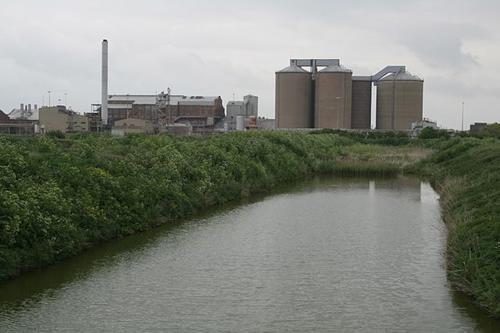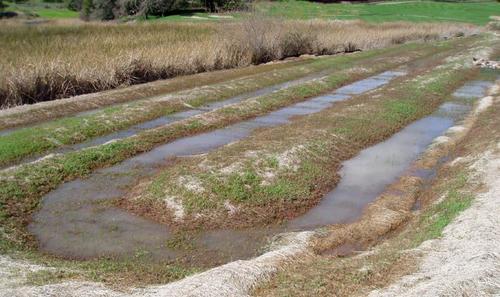Stormwater treatment
In the case of stormwater we need to ensure that surfaces through which stormwater run-off passes over should as far as possible be free from solids and other wastes. Thus, the collection of solid wastes is an important part of stormwater treatment as is the separate collection of wastewater and stormwater.
When collected in a combined sewerage system it is treated with the wastewater, though treatment is not effective during peak heavy stormwater run-off periods resulting in combined sewer overflow that is not treated. Storage basins or tanks can be used to accommodate moderate peak flows of combined stormwater and wastewater, and treating the stored water at night when wastewater flow is a minimum.
Separately collected stormwater is generally treated by passing it through a settling basin to remove solids. The retention time in the settling basin is designed so that solids can settle in say 20 minutes for a one in five-year storm-event. For storm-events less than the design value, removal efficiency is greater, while for storm-events greater than the design value removal efficiency is lower. Mechanical devices have been developed that can trap gross solids. Both settling basins and mechanical traps need to be cleaned regularly to maintain solids removal efficiency.
Naturally, landscaped stormwater drains can help filter out fine sediments through the action of vegetation slowing down the flow and trapping solids. In addition permeable surfaces allow rainwater to percolate into the soil, thus treating the water in much the same manner as basins or land based treatment of wastewater and at the same time reduce the amount of run-off. Pavements have been designed and manufactured for this purpose. Directing run-off to vegetated area (e.g. floodwater harvesting) can reduce down-stream flow and reuse the water for maintaining plant growth. This is especially beneficial in arid climates.
(UNEP 2000)

